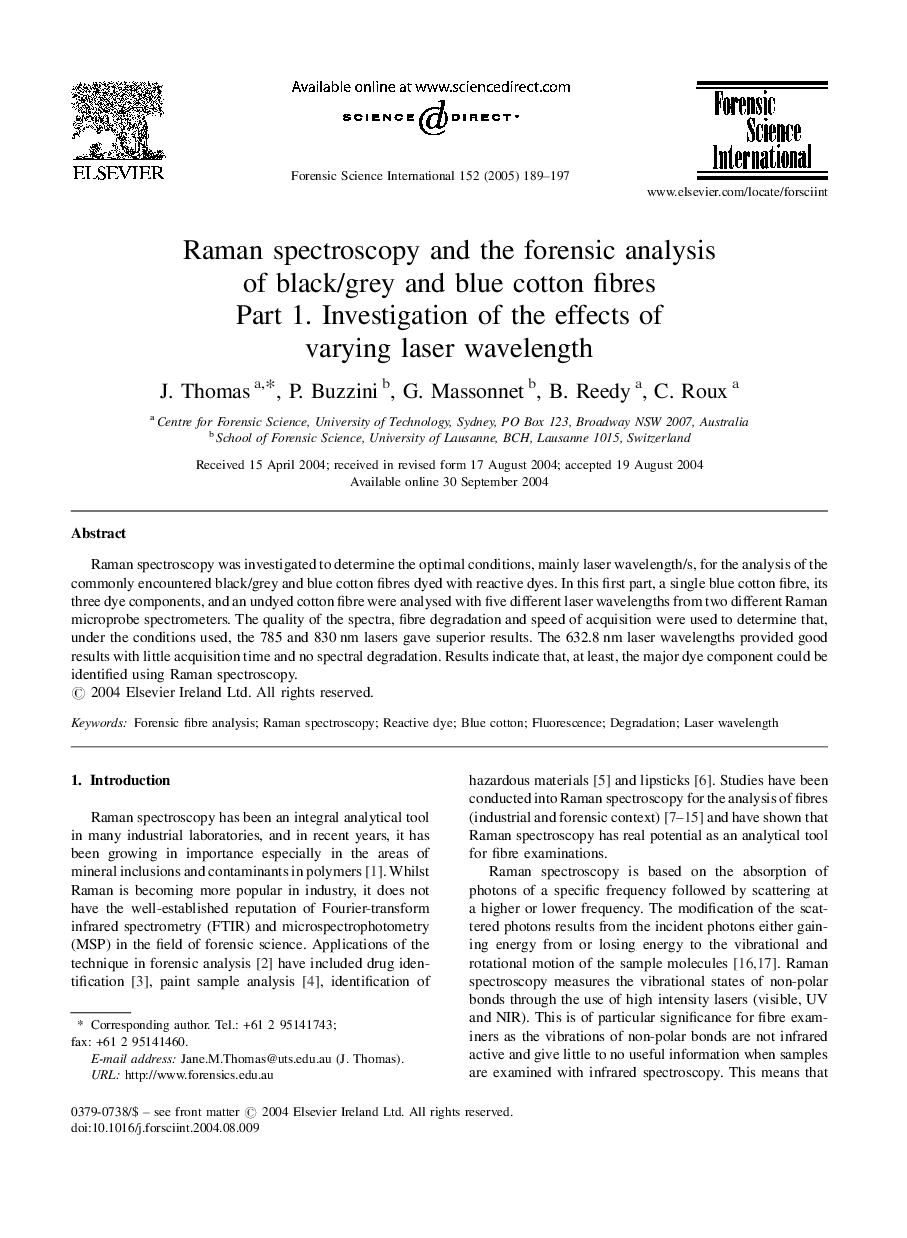| Article ID | Journal | Published Year | Pages | File Type |
|---|---|---|---|---|
| 9622491 | Forensic Science International | 2005 | 9 Pages |
Abstract
Raman spectroscopy was investigated to determine the optimal conditions, mainly laser wavelength/s, for the analysis of the commonly encountered black/grey and blue cotton fibres dyed with reactive dyes. In this first part, a single blue cotton fibre, its three dye components, and an undyed cotton fibre were analysed with five different laser wavelengths from two different Raman microprobe spectrometers. The quality of the spectra, fibre degradation and speed of acquisition were used to determine that, under the conditions used, the 785 and 830Â nm lasers gave superior results. The 632.8Â nm laser wavelengths provided good results with little acquisition time and no spectral degradation. Results indicate that, at least, the major dye component could be identified using Raman spectroscopy.
Related Topics
Physical Sciences and Engineering
Chemistry
Analytical Chemistry
Authors
J. Thomas, P. Buzzini, G. Massonnet, B. Reedy, C. Roux,
